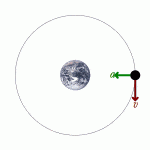Types Of Volcanoes At Divergent Boundaries
types of volcanoes at divergent boundaries
Have you ever given a second thought about the types of volcanoes at divergent boundaries? The openings or ruptures on the earth surface, or crust, through which hot lava, gases and volcanic ashes come out are called as volcanoes and the different types of volcanoes at divergent boundaries are categorized according to their geographical factors. Apart from the characteristic based classification, volcanoes are classified based on their location. Most common among them are the types of volcanoes at divergent boundaries.
TYPES OF VOLCANOES AT DIVERGENT BOUNDARIES
TYPES OF VOLCANOES AT DIVERGENT BOUNDARIES are the boundaries of tectonic plates of earth where two plates will be diverging and drifting apart from each other. The divergent plate boundaries cause the earth surface to ruptures and openings and eventually lead to eruption of magma contents. Type of volcanoes found here, are called as divergent boundary volcanoes. Statistics show that majority of volcanoes are found in such divergent plate boundaries. The volcanoes found in mid-Atlantic ridge, which are caused by divergent plate boundaries, are the best example for such volcanoes. Shield volcano is a type of volcano found at the divergent boundaries.
SPREADING CENTER VOLCANOES
The type of volcanoes that are caused by diverging plate boundaries are called as spreading center volcanoes. When the tectonic plates drift apart from each other, the magma contents buried underneath rises upwards and erupts out through the fissures and openings on the crust. Once the hot magma contents flows out of the fissures, they decompress and form basalt magmas. This process gives thermal buoyancy to the ridge areas in oceans and it is the major reason why these ridges stand up so tall in the ocean basins.
SHIELD VOLCANO
Shield volcano is a type of volcano that is formed entirely by fluid lava flows and got its name from its size and low profile, which resembles the shield of a warrior. Highly fluidic lava erupted travels farther and forms layers of lava as the eruptions become frequent and thus results in the formation of shield volcanoes. The layers are formed as a result of effusive eruptions.






